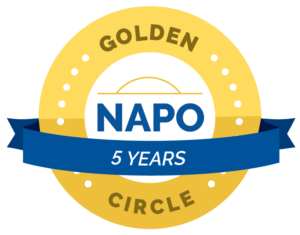I recently had a major disappointment. I’d been working on a project for nearly three years. Having spent lots of time, energy, and money on this endeavor, I was ready to reap the fruits of my labors. The final assignment was to pass a very rigorous test. I did not pass.
I was devastated. I’m used to succeeding. I couldn’t wrap my head around it.
I was mad.
I cried.
I swore (sorry Mom).
I screamed about my perceived injustice.
I crumbled.
Then I sat back and asked myself “what’s next?” How was I going to bounce back?
As a coach, I encounter this type of situation with my clients on a frequent basis. I worked with my personal coach (yes, even coaches use coaches) to help process the situation and determine my next steps.
Embrace the emotion: I’m a very emotional person. I feel deeply. This rocked me to the core and I knew I needed to acknowledge the disappointment. So, I let myself have 24 hours to process all the negative emotions, then I stopped feeling sorry for myself and started figuring out what my next step was. Years ago I remember my coaching mentor saying “there is motivation in emotion.” Yes, yes, there is!
Own it: I had a very clarifying conversation with my mentor. She gave me some incredible insight into where I’d gone wrong; how I could learn from this disappointment; and what I could do differently to prepare for my next opportunity. How often do we look at our ownership in things that don’t go the way we want them to?
Put it in perspective: At first, I wanted to completely throw in the towel, but deep-down I knew that would only be a further disappointment. I literally said to myself “why even try again?” Honestly! Even though I’d spent nearly three years working on this project, it is not a one-and-done opportunity. It’s a process. It’s a learning and character-building opportunity. In the scheme of things, this is a little bump in the road.
Learn from others and work harder: When I really thought about it, I realized I’d not put the effort into the test that I should have. I’m generally pretty successful at things and hadn’t really acknowledged the effort being successful in this endeavor was going to take. Fortunately, I have several colleagues that have been through this process. I asked each and every one of them what they did to be successful and have incorporated their processes into my new learnings. In a nutshell, I’ve learned both from my mistakes and the successes of others. And, frankly, I’m just plain working harder this time around.
The silver lining in this process is that I’ve become a stronger, smarter, and more resilient person than I was before this experience.
What can you learn from the disappointments, large or small, that you encounter? How do you bounce back?
Cindy Jobs








